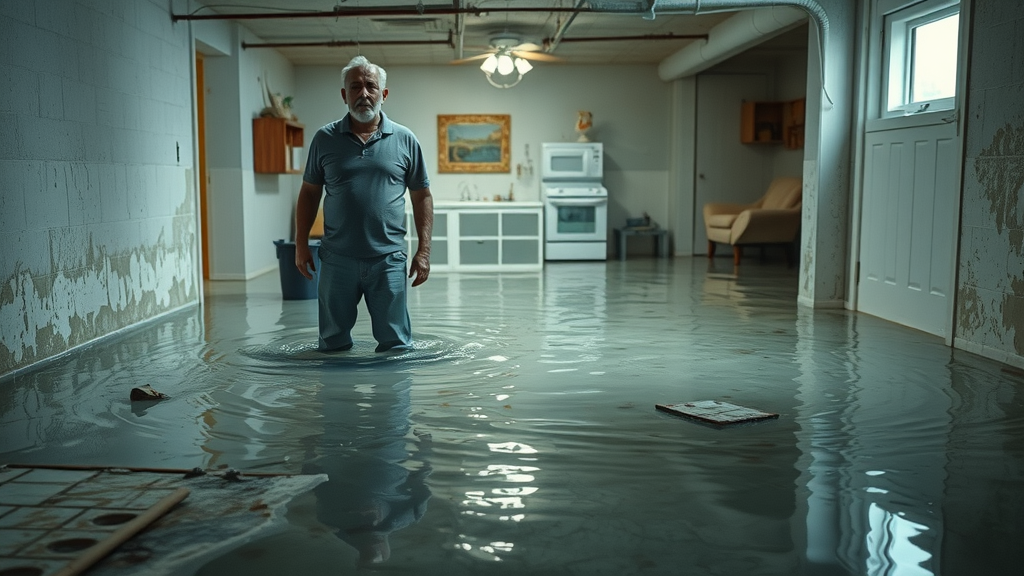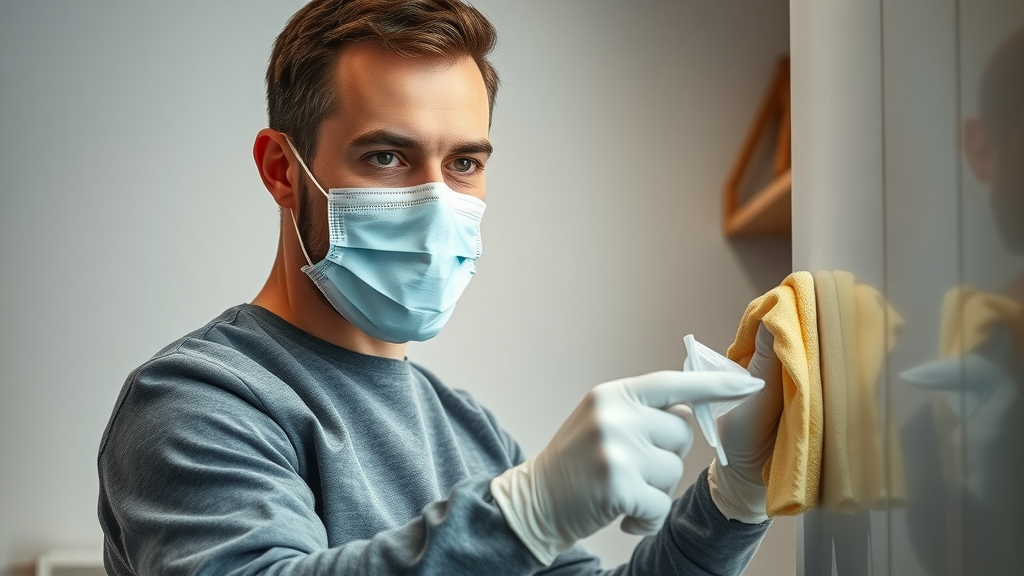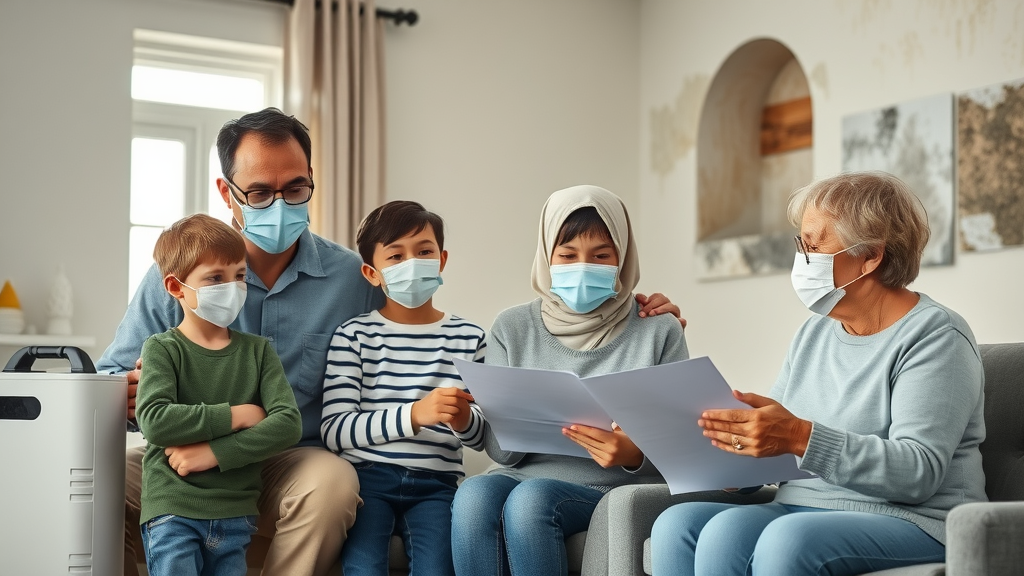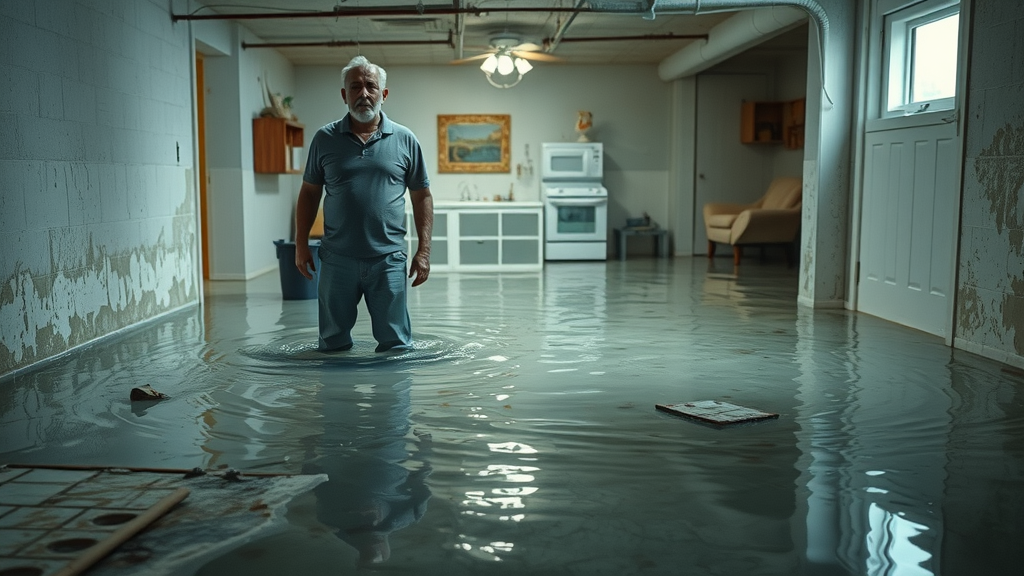Did you know thatup to 98% of basements in the US face water damage during their lifetime? That staggering fact means thewater damage cleanup processis not just essential—it’s urgent. When disaster strikes, acting fast saves money, emotional stress, and even your health. In this comprehensive guide, you’ll discover exactly how the water damage cleanup process works, why speed is critical, and how Lexington, SC homeowners can restore peace of mind and property in record time.
Water Damage Cleanup Process: Startling Facts and Why It Matters
The water damage cleanup process is often underestimated. Water can invade homes in minutes, but the real damage reveals itself over days or weeks through hidden mold, weakened structures, and costly repairs. Studies indicate that the typical US homeowner will face at least one instance of water damage, most commonly in basements, kitchens, or bathrooms. Immediate action prevents the escalation of health risks, such as respiratory problems from mold, and preserves valuable possessions and structural integrity. Homeowners in flood-prone regions or with aging plumbing systems are especially vulnerable, making damage restoration a priority.
Choosing effective mitigation strategies—like fast water removal and professional damage restoration—can save thousands in repairs and minimize health hazards. Lexington residents experience this first-hand, especially after heavy storms or plumbing failures. Recognizing the signs of water damage and understanding the restoration process arms you with the knowledge to act swiftly and smartly.
“Up to 98% of basements in the US will experience water damage during their lifetime—acted on fast, effective water damage cleanup process saves thousands and preserves health.”

What You’ll Learn About the Water Damage Cleanup Process
- Core steps in the water damage cleanup process
- How water damage restoration protects your property
- Signs of water damage and why quick action is critical
- Cost variables in water damage restoration
- Health implications and mold risks
- When to call a restoration pro in Lexington, SC
Understanding Water Damage: Sources and Signs
Common Sources of Water Damage
Water damage can come from many sources, and knowing where to look makes all the difference in stopping the flow early. Burst pipes and plumbing failures are among the top causes, often occurring unexpectedly due to wear and tear or extreme temperatures. Severe weather—especially storms and flash floods—can also lead to a sudden water intrusion, overwhelming basements and crawl spaces within minutes.
Other frequent culprits in the water damage cleanup process include appliance leaks from washing machines, water heaters, and dishwashers. Sewer backups introduce an additional level of risk due to potential contaminants, further complicating damage restoration and remediation. Pinpointing the main source of moisture is the first step toward efficient cleanup and minimizing the affected area.
- Burst pipes and plumbing failures
- Storm and flood events
- Appliance leaks
- Sewer backups
Early Signs of Water Damage and Affected Areas
Early detection is crucial. Some signs of water damage are clear, like standing water or soggy carpets, but others are more subtle. Staining or discoloration on ceilings and walls often signals hidden leaks. Musty odors may indicate mold growth—one of the leading health risks associated with prolonged moisture. Warped flooring or baseboards point to water seeping into structural materials, weakening them over time.
Mold patches and peeling paint are bold visual indicators that the affected areas need timely intervention. Ignoring these warning signs can lead to rapid mold colonization, deeper structural damage, and higher restoration costs. Homeowners should routinely inspect susceptible spots, especially after storms or plumbing incidents, to catch these clues before they escalate.
- Staining or discoloration on ceilings and walls
- Musty odors in affected areas
- Warped flooring or baseboards
- Mold patches and peeling paint

The Water Damage Cleanup Process: A Detailed Step-by-Step Guide
A reliable water damage cleanup process includes careful planning and precise execution. Rushing or skipping steps can result in hidden moisture, recurrent problems, and compromised safety. Whether you’re facing a minor leak or severe flooding, understanding the complete restoration process equips you for both DIY response and professional action. The five primary steps below are industry-standard for protecting both property and occupants.
- Inspection and Assessment of Affected Areas
- Water Removal: Extracting Standing Water
- Drying and Dehumidification
- Cleaning and Sanitizing
- Damage Restoration and Repairs
Inspection: Identifying the Extent of Water Damage
The first step in the damage restoration process is a thorough assessment of the affected area. Professionals use moisture meters and thermal cameras to measure water infiltration beyond just visible stains. A comprehensive inspection identifies the type of water (clean, gray, or black), the severity of the damage, and the zones needing prioritization—critical for mapping out an efficient restoration process.
During this stage, it’s essential to document all visible and hidden damage, including water-stained drywall, warped flooring, and soft spots in the structure. Pinpointing affected areas lets the restoration pro devise a targeted cleanup plan. Early, detailed assessments reduce the odds of secondary issues, such as mold or persistent moisture, and form the foundation for insurance claims.
Water Removal: Tackling Standing Water Quickly
Fast water removal is the cornerstone of any successful water damage cleanup process. The longer standing water remains, the greater the threat to floors, walls, and possessions. Restoration professionals employ portable wet vacuums, powerful pumps, and industrial-grade extraction machines to eliminate water quickly—often within hours.
Removing the standing water from the affected area is just the beginning. It’s also crucial to control room humidity to prevent moisture from resettling elsewhere. Efficient water removal ensures that the subsequent drying and dehumidification steps are effective, ultimately minimizing health risks from contaminated water and invisible mold spores.

Drying and Dehumidification: Prevent Mold Growth
Once water is removed, the drying process begins in earnest. Restoration professionals strategically place industrial air movers and high-capacity dehumidifiers throughout the affected areas. These machines accelerate moisture evaporation and capture airborne water particles—a process that can take one to several days depending on the severity and extent of water damage.
Constant monitoring with moisture meters ensures every nook and cranny is addressed. The drying and dehumidification phase is vital not just for surface restoration but for deep structural drying beneath flooring and behind walls. Left unchecked, even minor moisture will support mold growth or compromise your home’s original condition, resulting in recurring challenges and additional costs.
Sanitization and Cleaning of Affected Areas
After the drying process, thorough cleaning and sanitization safeguard both the property and its occupants. Restoration professionals use professional-grade cleaning solutions and personal protective equipment to disinfect surfaces exposed to contaminated water—from walls to flooring to personal belongings. This step destroys harmful bacteria, neutralizes odors, and stops mold before it proliferates.
Attention to detail in this phase is what sets a high-quality damage restoration process apart. Frequently touched surfaces, hidden corners, and air ducts are targeted to ensure no trace of contamination lingers. The goal is to bring your home or workplace back to a safe, livable state while preventing the recurrence of health risks.

Restoration Pro Services: Final Damage Restoration Process
With cleaning complete, restoration pros can restore the affected area to its pre-damage or original condition. This final step may include replacing drywall, painting, installing new flooring, or even structural repairs if the damage was extensive. Restoration is the process of rebuilding and renewing not just appearance, but safety and function.
A qualified restoration pro ensures any signs of water damage are permanently resolved, often providing guarantees or on-going monitoring. For many Lexington, SC homeowners, the reassurance of a professional, well-executed damage restoration process provides true peace of mind and a safe home for the future.
Water Damage Restoration in Lexington, SC: Local Insights
When it comes to the water damage cleanup process in Lexington, local factors like seasonal storms, flood-prone topography, and subtropical humidity mean that professional solutions must be prompt and tailored. Delays in cleanup often result in rapidly escalating health and repair costs unique to the region, where environmental conditions can accelerate mold growth and further water intrusion.
Local restoration professionals are trained to identify regional vulnerabilities, from high water tables to older building materials often found in Lexington homes. Working with a restoration pro not only ensures practical, code-compliant solutions but also provides peace of mind—an invaluable aspect of the damage restoration process for residents who want high-quality, long-lasting results.
“Lexington homeowners need professional water damage cleanup process with prompt, tailored solutions—delays can lead to escalating health and repair costs.”

Cost Factors in the Water Damage Cleanup Process
The cost of the water damage cleanup process varies based on several key factors, each contributing to the final bill. Understanding these variables can help you prepare, budget, and make informed decisions when disaster strikes. Elements like the size of the affected area, the severity of water damage, the type of water (clean, gray, black), and the need for repairs or remodeling all significantly influence cost. In Lexington, SC, market rates and material availability can also affect pricing compared to national averages.
Here’s a breakdown of primary cost drivers for most water damage restoration processes:
| Factor | Average Contribution to Total Cost |
|---|---|
| Size of affected area | 30-40% |
| Severity/extent of water damage | 20-30% |
| Type of water (clean, gray, black) | 15-25% |
| Required repairs and restoration | 25-35% |
Health Risks: Is Mold From Water Damage Toxic?
Mold resulting from water damage poses significant and often underestimated health risks. Short-term exposure can trigger respiratory symptoms, allergic reactions, and skin irritation—especially dangerous for the young, elderly, or immunocompromised. If left untreated, toxic black mold may develop, bringing severe complications like lung infections and long-term immune issues.
Beyond personal health, mold can undermine a home’s structure, leading to hidden rot and escalating repair costs. Homeowners in Lexington, SC should act swiftly at the first signs of water damage or musty smells, engaging restoration professionals to thoroughly remediate affected areas. Proper drying and dehumidification in the cleanup process are vital to eliminating both immediate and future mold threats.
Immediate and Long-Term Health Impacts
- Respiratory issues
- Allergies and immune response
- Structural hazards
Immediate symptoms of mold exposure can include coughing, congestion, and throat irritation. Over time, mold growth in hidden or hard-to-reach areas may prompt more severe reactions, from asthma flare-ups to long-standing respiratory distress. In severe cases, unchecked mold can contribute to structural damage, reducing a building’s safety and value. Regular inspections and prompt water removal are the best preventative measures for keeping your home and family safe from mold-related health risks.

When Should You Contact a Restoration Pro?
The water damage cleanup process often begins with the homeowner’s quick response, but there are situations where contacting a restoration pro is essential. If you encounter more than minor surface water or suspect hidden water intrusion, professional intervention can prevent secondary damage. Persistent signs of water, like recurring stains, musty odors, or visible mold, signal that the restoration process requires specialized tools and expertise.
- If there’s more than minor surface water
- Persistent water damage signs in affected areas
- Visible mold or musty smells
Restoration professionals bring advanced equipment—such as industrial air movers and dehumidifiers—and deep knowledge of the water damage restoration process. Their timely response minimizes overall costs, speeds up total recovery, and guarantees thorough sanitization you can’t achieve with consumer-grade tools alone.
People Also Ask About the Water Damage Cleanup Process
How to clean up after water damage?
- Remove standing water using pumps or wet vacuums
- Move valuables from affected areas
- Dry surfaces thoroughly and monitor for mold
- Call professionals if unsure about the restoration process
The best approach is swift and systematic: start by removing the standing water from the affected area using wet vacuums or pumps. Once water is removed, salvage belongings and start the drying process with fans and dehumidifiers. Watch for recurring signs of water damage such as staining or a musty odor—these warn of ongoing problems that may require a restoration pro. If contamination or severe flooding occurred, professional water damage restoration ensures safe and complete cleanup.
How much does it cost to clean up water damage?
Costs can range widely based on factors like the size of the affected area, the type of water involved (clean, gray, or black), and the amount of repair needed. Minor cleanups may cost a few hundred dollars, while severe water damage restoration involving structural or mold repairs can cost several thousand. Always obtain an upfront estimate from a trusted restoration pro who understands local conditions in Lexington, SC.
Is mold from water damage toxic?
Some molds, especially black mold (Stachybotrys chartarum), can produce toxins that pose serious health risks, particularly to babies, elderly, and immunocompromised individuals. Even less toxic molds can cause respiratory issues or allergies, making prompt removal and thorough sanitization crucial parts of the water damage cleanup process.
What is the process of water damage restoration?
The standard water damage restoration process includes inspection, water removal, drying and dehumidification, sanitization, and complete repairs to return your property to its original condition. Engaging a restoration pro ensures all steps are done effectively and safely, reducing health risks and preventing future damage.
FAQs About the Water Damage Cleanup Process
- How quickly should I start the water damage cleanup process?
The sooner, the better—ideally within 24 hours. Fast response helps prevent mold growth and minimizes repair costs. - What are the risks of delaying water damage restoration?
Delays can lead to severe structural damage, toxic mold growth, and higher repair bills. Quick action limits these risks and improves recovery outcomes. - How can I prevent future water damage in Lexington, SC?
Regular maintenance of plumbing, installing sump pumps, using water alarms, and weatherproofing basements safeguard homes from seasons of heavy rain and plumbing failures. - Will insurance cover the water damage restoration process?
Most standard policies cover sudden, accidental water damage but may exclude flooding or gradual leaks. Consult your provider and keep thorough documentation.
Key Takeaways: Fast Acting Makes a Difference
- Quick response limits damage and health risks
- Professional restoration pro services ensure thorough cleanup
- Understanding the water damage cleanup process empowers better decisions
Conclusion: Restore Your Peace of Mind with a Professional Water Damage Cleanup Process
Immediate, expert action in the water damage cleanup process preserves your property, health, and peace of mind—especially when disaster strikes in Lexington, SC.
Take Action: Water Damage Repair in Lexington, SC
Don’t wait for water damage to get worse—act now! For professional, fast, and effective water damage restoration in Lexington, contact a local restoration pro today and reclaim your home from water intrusion.
Sources
- https://www.epa.gov/mold/mold-cleanup-your-home – US EPA
- https://restorationindustry.org/page/WaterDamageTips – Restoration Industry Association
- https://www.fema.gov/pdf/hazard/winter/basement.pdf – FEMA
To deepen your understanding of the water damage cleanup process, consider exploring the following resources:
-
“The Full Guide: Water Damage Restoration” (homedepot.com) offers a comprehensive overview of the restoration steps, including mitigation, remediation, and restoration, helping you grasp the entire process from start to finish.
-
“Complete Guide to the Water Damage Restoration Process” (angi.com) provides detailed insights into each phase of restoration, from stopping the water source to making necessary repairs, ensuring you’re well-informed about the critical actions to take.
If you’re serious about effectively managing water damage, these resources will equip you with the knowledge needed to navigate the cleanup and restoration process confidently.

